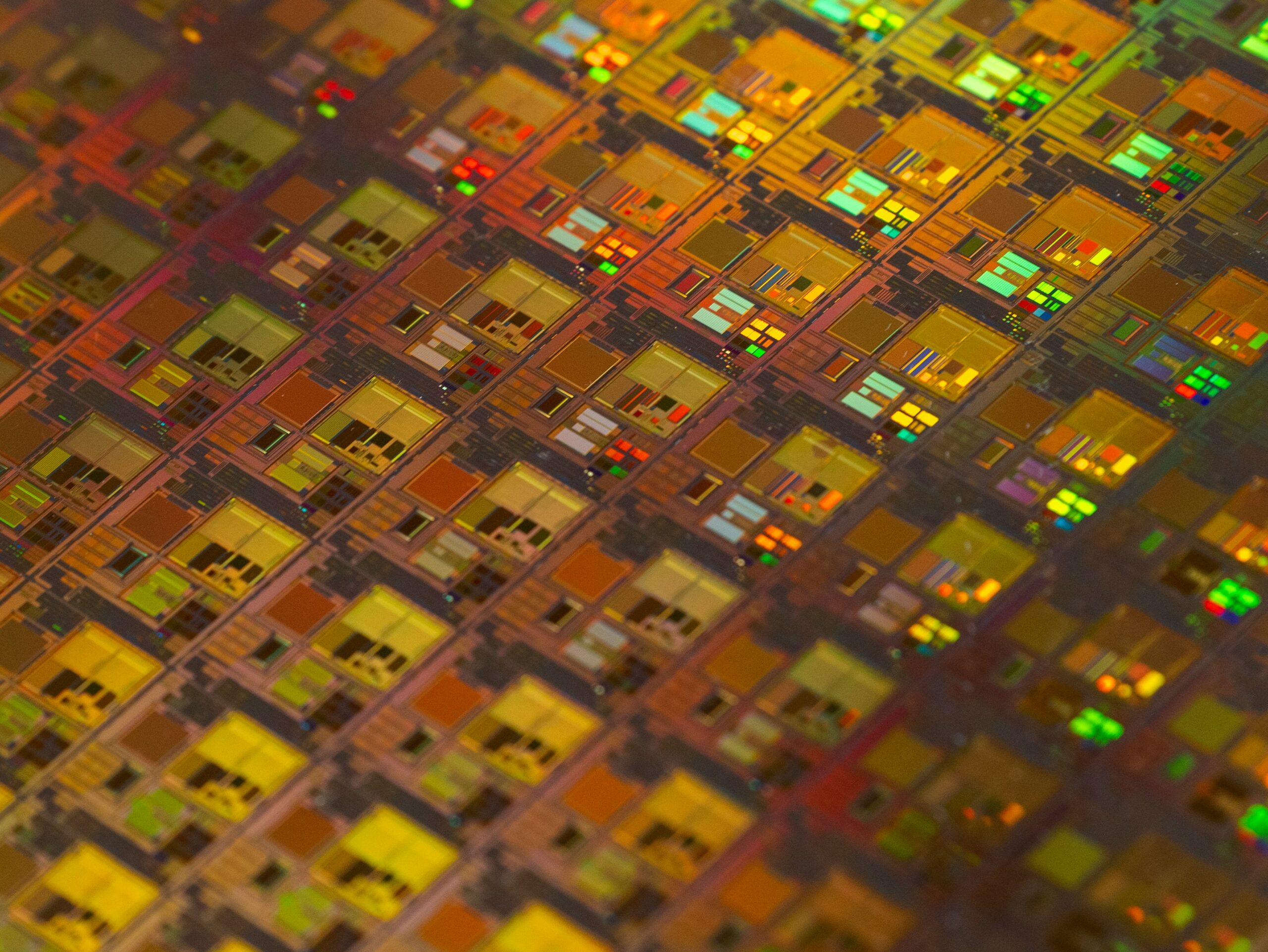The Department of Defense is investing $269 million into new technical projects to expand America’s microelectronics production and workforce development through the Microelectronics Commons (ME Commons) initiative. Funds come from the CHIPS and Science Act, which aims to strengthen semiconductor manufacturing in the U.S. and reduce reliance on foreign sources.
Created in 2023, the ME Commons includes eight centers that will receive a total of $2 billion in funding through 2028. This program will work to speed up the development of microelectronics in the U.S. and train workers with advanced skills for high-paying jobs.
RELATED: Additional $1.6 billion to help U.S. regain chip leadership
“These CHIPS and Science Act investments through the Microelectronics Commons will advance innovation for components that enable the most sophisticated defense systems, strengthening our national security,” the President’s Chief Advisor for Science and Technology and Director of the White House Office of Science and Technology Policy Arati Prabhakar said. “Today’s awards are the next step forward in making sure that we win the future.”
The eight regional hubs include:
- The Northeast Microelectronics Coalition (NEMC) Hub, led by the Massachusetts Technology Collaborative, with 90 members.
- The Silicon Crossroads Microelectronics Commons (SCMC) Hub, led by the Applied Research Institute in Indiana, with 130 members.
- The California Defense Ready Electronics and Microdevices Superhub (DREAMS), led by the University of Southern California, with 16 members.
- The Commercial Leap Ahead for Wide Bandgap Semiconductors (CLAWS) Hub, led by North Carolina State University, with seven members.
- The Southwest Advanced Prototyping (SWAP) Hub, led by Arizona State University, with 27 members.
- The Midwest Microelectronics Consortium (MMEC) Hub in Ohio, with 65 members.
- The Northeast Regional Defense Technology (NORDTECH) Hub, led by the State University of New York’s Research Foundation, with 51 members.
- The California-Pacific-Northwest AI Hardware Hub (Northwest AI Hub), led by Stanford University, with 44 members.
“Microelectronics are critical to our goals of having a more reliable microelectronics supply and to deliver next-generation capabilities for our troops,” Microelectronics Commons Executive director Dr. Devanand Shenoy said. “These awards will also upskill America’s workforce, thus helping keep America both secure and prosperous.”
The $269 million in funding is divided into six technical areas: $32 million for four quantum projects, $25 million for four secure edge computing projects, $42 million for five 5G/6G projects, $51 million for six electromagnetic warfare projects, $38 million for seven commercial innovation projects, and $42 million for seven artificial intelligence projects. Additionally, a Cross-Hub Enablement Solution (CHES) award is receiving $39 million.
As part of the announcement, officials from the Department of Defense and White House visited three of the eight hubs to discuss the progress of the ME Commons, recognize specific award recipients and provide more details about the research being funded. The tour started Tuesday at the SWAP Hub in Phoenix, continued Wednesday at the NEMC Hub in Boston and ended Thursday at the CLAWS Hub in Raleigh, N.C.
The SWAP Hub at Arizona State University received nearly $30 million in federal funding for five national security projects. According to Sally C. Morton, executive vice president of ASU Knowledge Enterprise, the university has led efforts to foster innovation and collaboration.
“SWAP Hub, along with our partners, leverages the collective expertise of our dedicated faculty and students at Arizona State University’s Fulton Schools to ensure a vital, sustainable and prosperous future for the region,” Morton said. “By bringing together researchers and industry leaders, we have helped drive advancements in technology that are transforming industries and boosting economic growth.”
The five SWAP Hub projects that received $29.6 million are:
- Integrated RF GaN Technology for NextG, 5G & 6G Wireless Systems: Led by NXP, Raytheon, National Instruments and ASU, this project aims to develop a unified, self-testing telecommunications system using gallium nitride technology to meet the growing demand for data by improving frequency, bandwidth and efficiency.
- SMART (Scalable Modular Architecture for RF Transceivers): A team including Alphacore, ASU, Rice University, Lockheed Martin and Auburn University is working to create a single chip that integrates communications and sensing functions, improving 5G/6G devices by increasing efficiency, reducing size and cost, and improving reliability.
- Spaceborne Low-Energy AI Computing: This project, led by ASU and Sandia National Laboratories, focuses on improving satellite AI capabilities. The goal is to create a highly efficient, radiation-resistant AI chip that will help satellites detect fast-moving or faint objects in space, making them far more efficient than current systems.
- Multi-MHz, High-Density, Ultra-Fast RADAR Power Converter: Led by ASU and Sandia, this project will develop a next-generation radar power converter using gallium nitride switching devices, offering six times more power density, faster response times and 50% less energy loss, which will enhance defense radar systems.
- ARC-V Secure Processor: A collaboration between Idaho Scientific, Synopsys and others, this project aims to create a secure, low-power processor that can be confidently used by the military in high-risk environments. The project will also develop tools for both military and commercial users to evaluate the processor’s performance and security.
The NEMC Hub received $37.8 million to boost microelectronics development, receiving six of the 33 project awards, the most given to any of the eight hubs. Each project includes the hub itself, a technical lead from a member organization and several other member organizations from the Northeast and across the country. Additionally, the NEMC Hub is involved in the CHES project focused on electronic design and automation tools.
“We have a tremendous opportunity to grow microelectronics lab-to-fab capabilities across the Northeast region and spur the growth of game-changing technologies in this sector,” NEMC Hub Director Mark Halfman said. “These programs will only be successful if our member companies have the talent to mature these technologies and expand their operations, which is why we use our CHIPS Act funding to go beyond tech investments and also fund innovative programs that will help train the next-generation semiconductor workforce.”
Four new projects at the CLAWS Hub were funded to the tune of $19 million. Selected from more than 100 proposals, these projects aim to enhance the performance of transistors and switches in civilian and military technologies, boosting U.S. economic competitiveness and national security while paving the way for commercialization.
Wide bandgap technologies provide military advantages against potential near-peer adversaries, with Commercial Leap Ahead technologies defined as those that surpass the current state of the art and are crucial for the nation’s economic competitiveness. Key civilian infrastructure, including power grids, data centers, telecommunications and transportation systems, often share the military’s need for higher performance, efficiency and reliability. Emerging critical technologies like artificial intelligence, quantum computing and autonomous vehicles will also rely heavily on wide bandgap semiconductors to enable their development.
The four selected CLAWS projects are:
- High Permittivity Dielectrics for III-Nitride Transistors: Led by NC State, this project received $3.83 million in first-year funding (with a total estimated value of $11.54 million) to enhance efficiency and radiation resistance of advanced transistors used in avionics and satellite applications. Partners include MACOM, EPC Space, Lockheed Martin, the University of Florida, NASA and Sandia National Laboratories.
- Transition Readiness for NITride RF Overmatch (T/R NITRO): Led by MACOM, this project received $3.68 million in first-year funding (with a total estimated value of $12.65 million) to develop advanced prototypes of high-frequency transistors and circuits for electronic warfare, radar and 5G/6G telecommunications. Partners include NC State, Adroit Materials and the Naval Research Laboratory.
- Advanced High Voltage Silicon Carbide Switches: Led by GE Aerospace, this project received $7.82 million in first-year funding (with a total estimated value of $27.02 million) to advance the development of 6.5 to 10 kV planar field-effect transistors and superjunction devices. Partners include Coherent, NC State, Stony Brook University, the University of Albany, the Naval Research Laboratory, DEVCOM and N.C. A&T State University.
- Advanced Power Switches Using UWBG Gallium Oxide: Led by Kyma Technologies, this project received $3.52 million in first-year funding (with a total estimated value of $11.40 million) to develop gallium oxide high-voltage switching devices capable of handling up to 10 kV. It will also provide materials and devices to the Defense Department and broader community. Partners include NC State, the University of California at Santa Barbara, Modern Microsystems, the Air Force Research Laboratory, the Naval Research Laboratory and GE Aerospace.
In 2023, the Department of Defense announced nearly $240 million in funding to establish the eight hubs. Since then, the number of members has increased from about 400 to more than 1,200 innovators, transition owners, academic leaders, defense industrial base partners, government program managers, and prototyping and manufacturing facilities, all focused on facilitating lab-to-fab prototyping.
This year’s funds are being distributed across 28 states and Washington, D.C. For more information about the ME Commons and how to join, visit the initiative’s official website.
Photo by Maxence Pira on Unsplash













